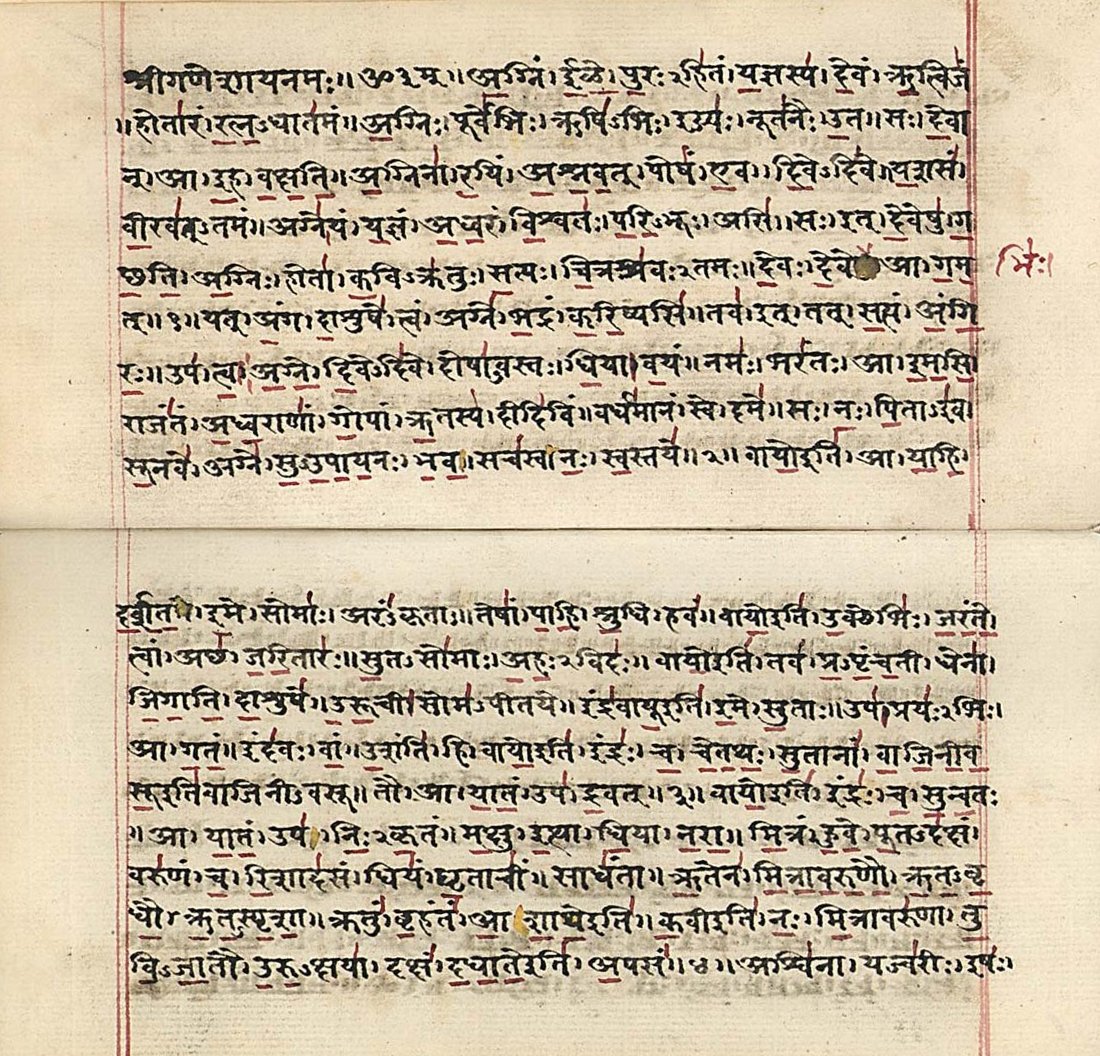|
Anumana
''Pramana'' (Sanskrit: प्रमाण, ) literally means "proof" and "means of knowledge".pramANa Sanskrit-English Dictionary, Koeln University, GermanyJames Lochtefeld, "Pramana" in The Illustrated Encyclopedia of Hinduism, Vol. 2: N-Z, Rosen Publishing. , pages 520-521 In Indian philosophies, pramana are the means which can lead to knowledge, and serve as one of the core concepts in Indian . It has been one of the key, much debated fields of study in , |
Samkhya
''Samkhya'' or ''Sankya'' (; Sanskrit सांख्य), IAST: ') is a dualistic school of Indian philosophy. It views reality as composed of two independent principles, ''puruṣa'' ('consciousness' or spirit); and ''prakṛti'', (nature or matter, including the human mind and emotions). ''Puruṣa'' is the witness-consciousness. It is absolute, independent, free, beyond perception, above any experience by mind or senses, and impossible to describe in words. Unmanifest ''prakriti'' is matter or nature. It is inactive, unconscious, and is a balance of the three ''guṇas'' (qualities or innate tendencies), namely ''sattva'' , ''rajas'', and '' tamas''. When prakṛti comes into contact with Purusha this balance is disturbed, and Prakriti becomes manifest, evolving twenty-three tattvas, namely intellect (buddhi, mahat), ego (ahamkara) mind ( manas); the five sensory capacities; the five action capacities; and the five "subtle elements" or "modes of sensory content" (''tanma ... [...More Info...] [...Related Items...] OR: [Wikipedia] [Google] [Baidu] |
Sanskrit
Sanskrit (; attributively , ; nominalization, nominally , , ) is a classical language belonging to the Indo-Aryan languages, Indo-Aryan branch of the Indo-European languages. It arose in South Asia after its predecessor languages had Trans-cultural diffusion, diffused there from the northwest in the late Bronze Age#South Asia, Bronze Age. Sanskrit is the sacred language of Hinduism, the language of classical Hindu philosophy, and of historical texts of Buddhism and Jainism. It was a lingua franca, link language in ancient and medieval South Asia, and upon transmission of Hindu and Buddhist culture to Southeast Asia, East Asia and Central Asia in the early medieval era, it became a language of religion and high culture, and of the political elites in some of these regions. As a result, Sanskrit had a lasting impact on the languages of South Asia, Southeast Asia and East Asia, especially in their formal and learned vocabularies. Sanskrit generally connotes several Indo-Aryan lang ... [...More Info...] [...Related Items...] OR: [Wikipedia] [Google] [Baidu] |
Advaita Vedanta
''Advaita Vedanta'' (; sa, अद्वैत वेदान्त, ) is a Hindu sādhanā, a path of spiritual discipline and experience, and the oldest extant tradition of the orthodox Hindu school Vedānta. The term ''Advaita'' (literally "non-secondness", but usually rendered as "nondualism", and often equated with monism) refers to the idea that '' Brahman'' alone is ultimately real, while the transient phenomenal world is an illusory appearance ('' maya'') of Brahman. In this view, (''jiv) Ātman'', the experiencing self, and ''Ātman-Brahman'', the highest Self and Absolute Reality, is non-different. The ''jivatman'' or individual self is a mere reflection or limitation of singular ''Ātman'' in a multitude of apparent individual bodies. In the Advaita tradition, '' moksha'' (liberation from suffering and rebirth) is attained through recognizing this illusoriness of the phenomenal world and disidentification from the body-mind complex and the notion of 'd ... [...More Info...] [...Related Items...] OR: [Wikipedia] [Google] [Baidu] |
Sense And Reference
In the philosophy of language, the distinction between sense and reference was an idea of the German philosopher and mathematician Gottlob Frege in 1892 (in his paper "On Sense and Reference"; German: "Über Sinn und Bedeutung"), reflecting the two ways he believed a singular term may have Meaning (philosophy), meaning. The reference (or "referent"; ''Bedeutung'') of a ''proper name'' is the object it means or indicates (''bedeuten''), whereas its sense (''Sinn'') is what the name expresses. The reference of a ''sentence'' is its truth value, whereas its sense is the thought that it expresses."On Sense and Reference" ["Über Sinn und Bedeutung"], ''Zeitschrift für Philosophie und philosophische Kritik'', vol. 100 (1892), pp. 25–50, esp. p. 31. Frege justified the distinction in a number of ways. #Sense is something possessed by a name, whether or not it has a reference. For example, the name "Odysseus" is intelligible, and therefore has a sense, even though there is no individ ... [...More Info...] [...Related Items...] OR: [Wikipedia] [Google] [Baidu] |
Padārtha
Padārtha is a Sanskrit word for "categories" in Vaisheshika and Nyaya schools of Indian philosophy.Padārtha Jonardon Ganeri (2014), Stanford Encyclopedia of Philosophy Definition The term “Padārtha” derived from two “Pada” or word and “Artha” or the meaning or referent. Therefore etymologically the term Padārtha means “the meaning or referent of words”.Philosophical significance Almost all the philosophical systems of India accept liberation as the ultimate goal of life; it is the summum bonum. For attaining liberation different philosophies prescribe different means. According to Aksap ...[...More Info...] [...Related Items...] OR: [Wikipedia] [Google] [Baidu] |
Indo-Iranian Journal
''Indo-Iranian Journal'' is a peer-reviewed academic journal focusing on aspects of Indo-Iranian cultures. The journal was started by Jan Willem de Jong and Franciscus Bernardus Jacobus Kuiper in 1957 with Ludwig Alsdorf, Harold Walter Bailey, Louis Renou, Sumitra Mangesh Katre and Daniel H. H. Ingalls on its editorial board. Currently its editor-in-chief An editor-in-chief (EIC), also known as lead editor or chief editor, is a publication's editorial leader who has final responsibility for its operations and policies. The highest-ranking editor of a publication may also be titled editor, managing ...s are Peter Bisschop ( Leiden University) and Jonathan Silk ( Leiden University). Retrieved on 2023-01-03. References External links *[...More Info...] [...Related Items...] OR: [Wikipedia] [Google] [Baidu] |
Modus Ponens
In propositional logic, ''modus ponens'' (; MP), also known as ''modus ponendo ponens'' (Latin Latin (, or , ) is a classical language belonging to the Italic branch of the Indo-European languages. Latin was originally a dialect spoken in the lower Tiber area (then known as Latium) around present-day Rome, but through the power ... for "method of putting by placing") or implication elimination or affirming the antecedent, is a Deductive reasoning, deductive argument form and rule of inference. It can be summarized as "''P material conditional, implies Q.'' ''P'' is true. Therefore ''Q'' must also be true." ''Modus ponens'' is closely related to another Validity (logic), valid form of argument, ''modus tollens''. Both have apparently similar but invalid forms such as affirming the consequent, denying the antecedent, and evidence of absence. Constructive dilemma is the Logical disjunction, disjunctive version of ''modus ponens''. Hypothetical syllogism is close ... [...More Info...] [...Related Items...] OR: [Wikipedia] [Google] [Baidu] |
Bhaṭṭikāvya
' (; "Bhatti's Poem") is a Sanskrit-language poem dating from the 7th century CE, in the formal genre of "great poem" (mahākāvya). It focuses on two deeply rooted Sanskrit traditions, the ''Ramayana'' and Panini's grammar, while incorporating numerous other traditions, in a rich mix of science and art, poetically retelling the adventures of Rama and a compendium of examples of grammar and rhetoric. As literature, it is often considered to stand comparison with the best of Sanskrit poetry. The ' also has ' ("The Death of ") as an alternative title. It is improbable that this was the original title as Ravana's death is only one short episode in the whole poem. It may have acquired this title to distinguish it from other works concerning themselves with the deeds of . The poem is the earliest example of an "instructional poem" or '. That is not a treatise written in verse but an imaginative piece of literature which is also intended to be instructive in specific subjects. To modern ... [...More Info...] [...Related Items...] OR: [Wikipedia] [Google] [Baidu] |
Monier Monier-Williams
Sir Monier Monier-Williams (; né Williams; 12 November 1819 – 11 April 1899) was a British scholar who was the second Boden Professor of Sanskrit at Oxford University, England. He studied, documented and taught Asian languages, especially Sanskrit, Persian and Hindustani. Early life Monier Williams was born in Bombay, the son of Colonel Monier Williams, surveyor-general in the Bombay presidency. His surname was "Williams" until 1887, when he added his given name to his surname to create the hyphenated "Monier-Williams". In 1822, he was sent to England to be educated at private schools at Hove, Chelsea and Finchley. He was educated at King's College School, Balliol College, Oxford (1838–40), the East India Company College (1840–41) and University College, Oxford (1841–44). He took a fourth-class honours degree in Literae Humaniores in 1844. He married Julia Grantham in 1848. They had six sons and one daughter. He died, aged 79, in Cannes, France. In 1874 he bought ... [...More Info...] [...Related Items...] OR: [Wikipedia] [Google] [Baidu] |
Hindi
Hindi (Devanāgarī: or , ), or more precisely Modern Standard Hindi (Devanagari: ), is an Indo-Aryan languages, Indo-Aryan language spoken chiefly in the Hindi Belt region encompassing parts of North India, northern, Central India, central, East India, eastern, and Western India, western India. Hindi has been described as a standard language, standardised and Sanskrit#Influence on other languages, Sanskritised Register (sociolinguistics), register of the Hindustani language, which itself is based primarily on the Old Hindi, Khariboli dialect of Delhi and neighbouring areas of North India. Hindi, written in the Devanagari script, is one of the two official languages of the Government of India, along with Indian English, English. It is an languages with official status in India, official language in nine states and three union territory, union territories and an additional official language in three other states. Hindi is also one of the 22 languages with official status in ... [...More Info...] [...Related Items...] OR: [Wikipedia] [Google] [Baidu] |
Guessing
A guess (or an act of guessing) is a swift conclusion drawn from data directly at hand, and held as probable or tentative, while the person making the guess (the guesser) admittedly lacks material for a greater degree of certainty. A guess is also an unstable answer, as it is "always putative, fallible, open to further revision and interpretation, and validated against the horizon of possible meanings by showing that one interpretation is more probable than another in light of what we already know". In many of its uses, "the meaning of guessing is assumed as implicitly understood",Mark Tschaepe, "Gradations of Guessing: Preliminary Sketches and Suggestions", in John R. Shook, ''Contemporary Pragmatism'' Volume 10, Number 2, (December 2013), p. 135-154. and the term is therefore often used without being meticulously defined. Guessing may combine elements of deduction, induction, abduction, and the purely random selection of one choice from a set of given options. Guessing may also ... [...More Info...] [...Related Items...] OR: [Wikipedia] [Google] [Baidu] |





